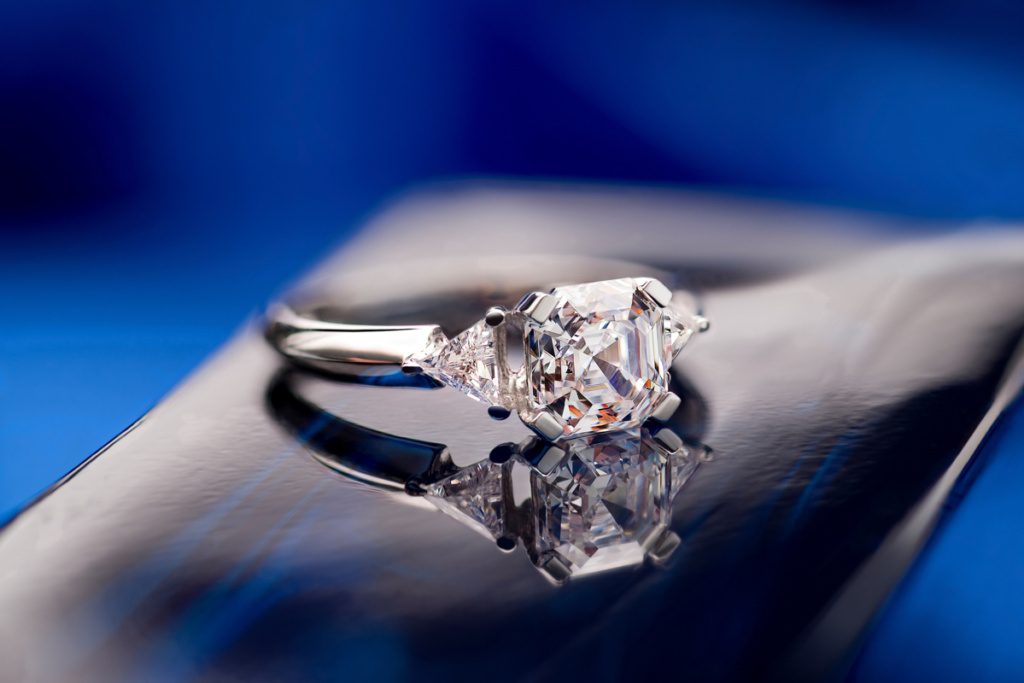In product photography terms, some jewellery photography inhabits the same rarefied space it does on the shelves of the types of shops you have to be buzzed into. When your subject costs more per square inch than the car you drove to the studio in, you need to bring your A-game and produce flawless results. Last week, we gave a little insight into what we consider an emulatable studio methodology and this week we’ll focus a little more on the other key component – The editing process.
Usually editing in-house, we’re able to have close dialogue between our camera nerds and our photoshop nerds (sometimes it is in fact one and the same nerd – a real Rennaisance Geek!!) so one skill is able to complement the other. Disciplined organising and naming of files at the point of shooting can save a lot of head-scratching in the editing suite, especially when shooting several similar exposures of the same item. See our previous blog on Focus Stacking to appreciate how minutely different but individually important several files can be.
A photographer can help an editor (or a rennaisance geek can help themself) save time by keeping a clean shooting area, using a sturdy tripod and carefully positioning the subjects. Just because you’re really good with straightening tools and spot removal in photoshop, the more time you can avoid using them, the more you can apply to other areas of the job. Fundamentally, we try to utilise the natural reflections (well, those we’ve already tried to control in-studio), enhancing and cleaning up the jewellery rather than simply rendering in photoshop. Whilst the latter is an oft-used method within the industry, it frequently produces results with an uncanny quality – the human eye is far more sophisticacted than even the most expensive camera and will pounce on anything that looks too unreal.
Using the gradients curve in photoshop, our editors frequently create pure white backdrops, especially popular (sometimes required, such as by Amazon) in product photography. If shot on a non-white backdrop, this sometimes requires careful cutting out using marquee, selection and path tools. Once “cut out”, Layer Masks make it easy to substitute different backdrops to give clients more options and stand out against the competition.
In the studio, our shooters use carefully positioned cards, foam board and diffusers of various tones to manage the reflections and defining shadows which best reveal the form of the pieces themselves. For example, see the black strips used in the focus stacking images above to add dark definition to the extreme edges of the ring. Our retouchers therefore try to retain these details, whilst cleaning up any vague edges, removing distractions (such as the reflected lens barrell – particularly hard to avoid with curved subjects) and sharpening the overall image whilst softening key parts for smoother tonal transitions. If too many greasy fingerprints are being discovered, a call usually goes downstairs to tell the photographer to stop eating biscuits between shots!
Further retouching involves dodging and burning for stronger definition of form – metal finishes in particular frequently require airbrushing of surfaces and adding of shadow and tone to edges. Sharpening of gemstones is also common – by creating a heavily sharpened layer, you can punch through to this (Layer Masks once more) to highlight the sparkly elements of the stone, and create real impact. Colourful gems can be brought to life with an increase in vibrancy and saturation levels, and by careful airbrushing to replace transparent or less vibrant portions.
There are many tricks at an experienced retouchers disposal but one of the most imporant is remembering to take a break from a “finished” image before returning to take a second look. It’s easy to temporarily lose perspective when you get too deep into an edit so if you find yourself really going to town in the editing suite, get some fresh air and return with fresh eyes. We want our images to appear aspirational and near-flawless but if it’s over-processed to unnatural, instagram-tastic levels, it’s not going to make the cut …. and we’re going to buy a milder brand of coffee for the office!!
Thanks for reading

